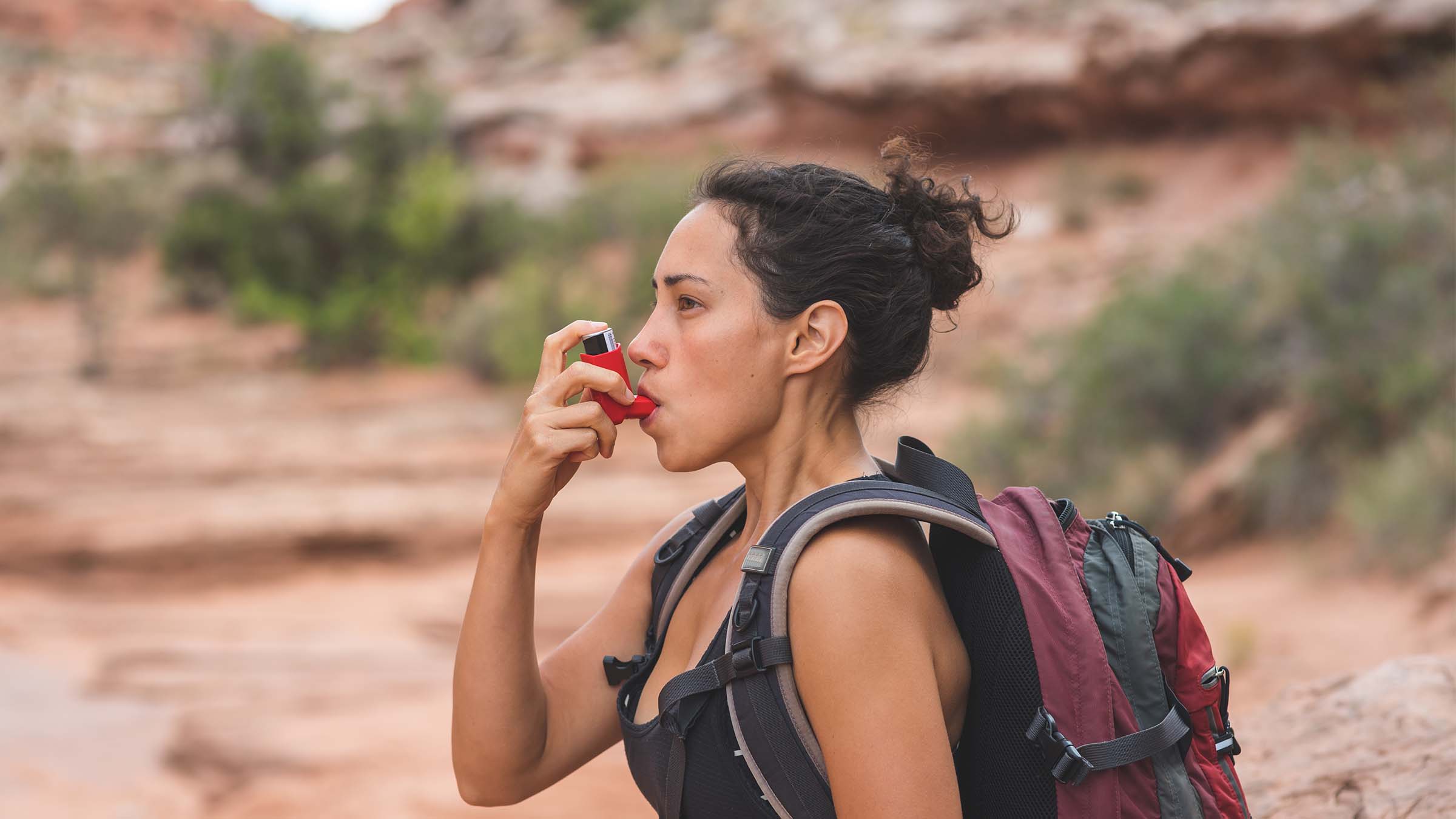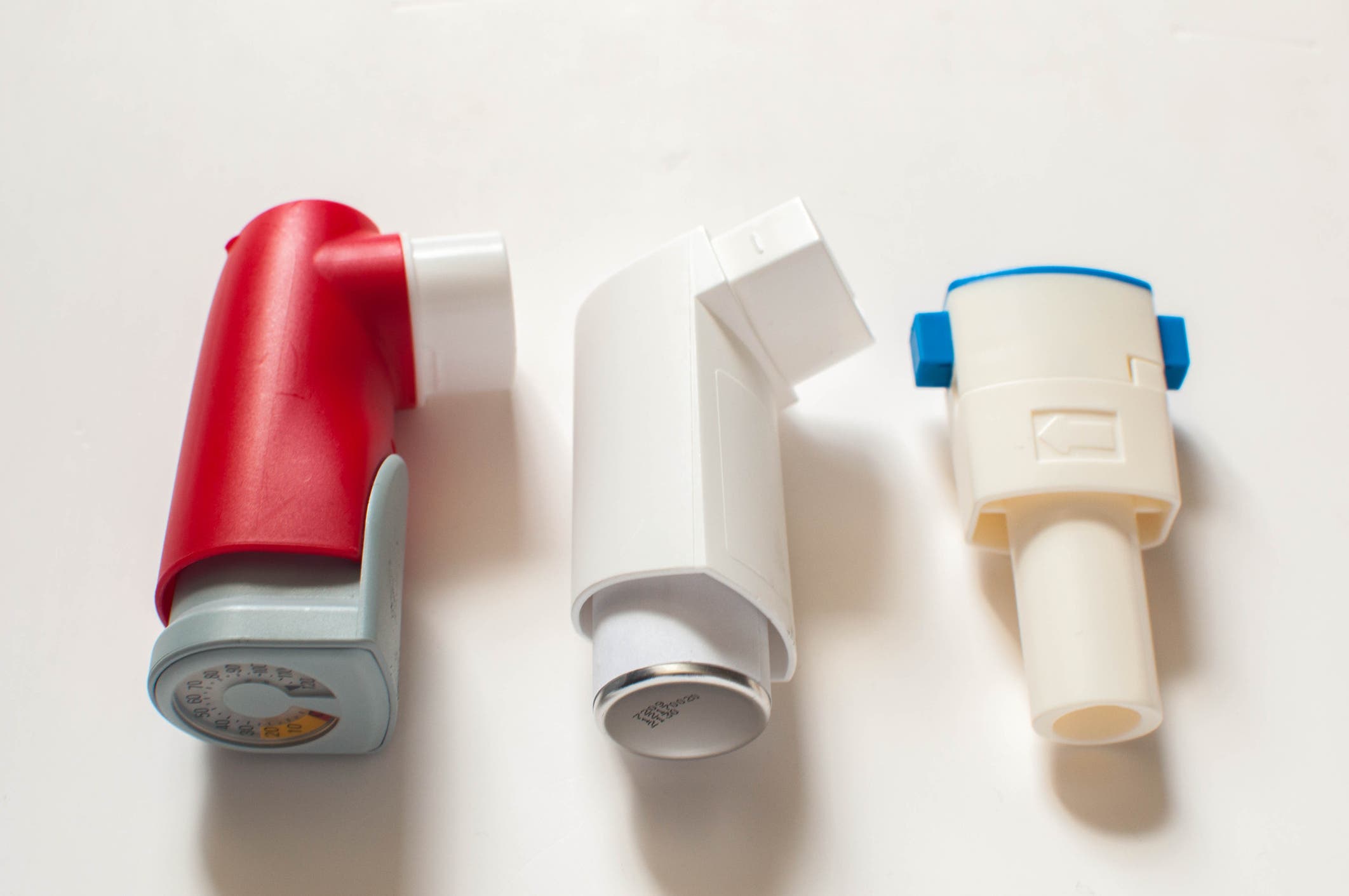How to Hike with Asthma

(Photo: FatCamera/E+ via Getty Images)
You’re hiking up the seventh of 10 steep switchbacks one cool, spring morning when it becomes difficult to breath. You begin wheezing, coughing, and a tightness takes hold of your chest.
Asthma attack.
If you have asthma, chances are you hike with an inhaler prescribed by your physician (about 25 million Americans are currently diagnosed with asthma). Taking a break and inhaling the medication should stop the attack so you can resume your hike. But what if this is your first attack, or you didn’t pack the inhaler?
In these cases, try to determine what triggered the attack and remove the respiratory irritant. In exercise-induced bronchospasm (EIB), vigorous exercise causes asthma attacks. Working up a sweat, especially in cold weather, makes the muscles constrict around the bronchial tubes in the lungs, restricting airflow. First, take a rest until your breathing returns to normal. If the air is cold, breathe through a bandanna, Buff, or some other thin material to give the air a chance to warm, which helps relax the bronchioles. Hiking with a Buff or neck gaiter around your mouth in the first place can help prevent lung irritation.
With chronic asthma, exercise may be a trigger, but more often allergies, a virus, air pollutants, or dust particles are responsible. If you’re allergic to the pollen from cottonwood trees, for example, get as far away as possible from the vegetation while experiencing an asthma attack.
In all instances, try to remain calm. Relaxing will help open the airway and ease the asthmatic reaction. Breathe through pursed lips, as if you’re blowing out a candle 3 feet away. This can create pressure in your lungs that enables the airway to open and let trapped air out. The dilemma in serious asthma attacks is not so much one of breathing in, but of exhaling so you can take your next breath.
In most serious cases of respiratory distress, an epinephrine injection in the form of an EpiPen may be necessary, followed by evacuation. Do not take antihistamines; these can further constrict the airway.
How to Help Someone Having an Asthma Attack
Maybe you’re not the one with asthma, but your hiking partner begins struggling to breathe while deep in the backcountry. Don’t panic. If you know your partner carries an inhaler, retrieve it from their pack and give it to them. If you know your hiking partner struggles with asthma often, ask them for an extra inhaler before your hike. Keep it handy so you can quickly provide help in the instance of an attack.
If you don’t have an inhaler, encourage your partner to take a rest and follow the steps outlined above. Remain calm: If you panic, so will your hiking partner, which will only exacerbate the situation. Remind your partner to breathe through pursed lips. In extreme cases, you may be able to help restore breathing by performing the Heimlich maneuver—thrusting in and up four times at the bottom of the victim’s rib cage to expel trapped air and mucus.
Types of Inhalers That Hikers Should Know

Inhalers deliver medication to the lungs through inhalation. The delivery method varies by type of inhaler, as does the medication itself. Generally speaking, inhalers help to both manage asthma symptoms over the long term and to alleviate symptoms during an asthma attack. Talk to your doctor to determine what type of inhaler is best for you. In many cases, a doctor will prescribe an albuterol inhaler for exercise-induced asthma. Albuterol is a bronchodilator—it helps open and promote airflow through the lungs’ bronchial tubes to prevent and relieve coughing and wheezing and help you breathe. If an albuterol inhaler isn’t working for you, your doctor may prescribe different medication.
See a doctor before hitting the trail if you notice any changes in your breathing. If you’ve been diagnosed as having asthma, keep an inhaler handy when backpacking regardless of how long it’s been since your last attack, and give a backup inhaler to your hiking partner. The few measly ounces it will add to your pack weight could mean the difference between life and death.